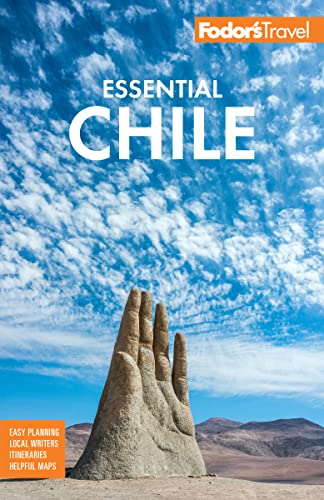Chilean History
Precolonial Chile
The indigenous groups living in Chile before the arrival of the Spanish can be categorized as the pre-Incan cultures in the north, the Mapuche in the region between the Choapa River and Chiloé, and the Patagonian cultures in the extreme south. Although the Incan Empire extended into Chile, the Mapuche successfully resisted their incursions; there is a debate about how much of Chile the Incans conquered.
The geoglyphs constructed between AD 500 and 1400 in the mountains along ancient northern trade routes are some of the most important in the world. The Chinchorro mummies, relics of the Chinchorro people who lived along the northern coast, are the oldest in the world, dating from 6000 BC. They are visible at the Museo Arqueológico de San Miguel de Azapa near Arica. The Museo Arqueológico Gustavo Le Paige in San Pedro de Atacama has an impressive collection of precolonial and colonial objects.
In Temuco, the Museo Regional de la Araucanía provides a fairly good introduction to Mapuche art, culture, and history. Temuco and its environs also offer a sense of modern Mapuche life. Farther south, the Museo Salesiano de Maggiorino Borgatello in Punta Arenas has an interesting collection of artifacts from various Patagonian cultures. Finally, in Santiago, the Museo Chileno de Arte Precolombino has an excellent collection of indigenous artifacts from Mexico to Patagonia.
Colonial Chile
While Ferdinand Magellan and Diego de Almagro both traveled to Chile earlier, it was Pedro de Valdivia who founded Santiago in 1541. Before being killed in battle by a Mapuche chief, Valdivia established a number of other important towns in Chile as well. Yet the Mapuche successfully resisted Spanish conquest and colonization, ruling south of the Bío Bío River until the 1880s.
The Plaza de Armas is where Pedro de Valdivia founded Santiago in 1541. The Iglesia San Francisco is Santiago's oldest structure dating from 1586, although it was partially rebuilt in 1698 and expanded in 1857. The Casa Colorada is a well-preserved example of colonial architecture. It was the home of Mateo de Toro y Zambrano, a Creole businessman and Spanish soldier, and now houses the Museo de Santiago. On Chiloé near Ancud, the San Antonio Fortconstructed in 1786 is all that remains of Spain’s last outpost in Chile.
Independence
September 18, 1810—Chilean Independence Day—is when a group of prominent citizens created a junta to replace the Spanish government. However, full independence was achieved several years later in 1818 with the victory of the Battle of Maipú by Bernardo O'Higgins and José de San Martín. Chiloé remained under Spanish control until 1826.
The Temple of Maipú on the outskirts of Santiago was constructed in honor of the Virgin of Carmen, patron saint of Santiago, after the Battle of Maipú. While the original temple was destroyed, its foundations still exist near the new structure built in the 1950s.
The Palacio Cousiño in Santiago, built by one of Chile’s most important families in 1871, provides an excellent sense of how the elite lived in an independent, modernizing Chile. Note that the building suffered significant damage during the February 2010 earthquake and is currently closed until further notice.
Military Dictatorship
In 1973, Chile’s first socialist president, Salvador Allende, was overthrown by a military coup by the Chilean Air Force. Some of the bullet holes from their bombardment of the Palacio de La Moneda, where Allende committed suicide after refusing to surrender, can still be seen today. Today, this building is the site of the country’s presidential offices; construction first began on it in 1784.
A junta led in part by Augusto Pinochet, the commander-in-chief of the Chilean army, seized power and began to detain thousands of people whom they considered potential subversives, including political activists, journalists, professors, and trade unionists. The junta used the Estadio Nacional in Santiago as a prison camp and torture site for tens of thousands of detainees. The stadium is considered a national site and has since been renovated and expanded. First-division soccer matches and large concerts are now held in this stadium.
The most important site used by the Chilean secret police to torture and interrogate political prisoners during the Pinochet era is on the outskirts of Santiago. Once a spot where artists and progressives would meet up, Villa Grimaldi held more than 4,000 detainees in the mid-1970s. Today, it is a memorial site and peace park featuring a wall of names of its prisoners and a memory room containing personal items and mementos of the people who “disappeared” at Villa Grimaldi.
Two other prominent sites that the Pinochet regime used for torture and imprisonment are found in the Atacama Desert to the north of Santiago. In Chacobuco, a ghost town roughly 70 km (43 miles) north of Antofagasta in El Norte Grande, the regime established a notorious prison camp, and the artwork of its former inhabitants still lines the walls. Farther north, around 168 km (100 miles) north of Iquique, Pisagua was where the Pinochet regime established a camp for missing persons and political prisoners. The camp still haunts the small town even now.
One of the largest cemeteries in Latin America, the Cementerio General de Santiago, is an important national monument that reveals a lot about traditional Chilean society. Most Chilean presidents are buried here, with the notable exception of Pinochet. Salvador Allende, who was originally buried in a makeshift grave outside of Viña del Mar, was transported here when democracy was restored to the country. His grave, along with the memorials for those disappeared during the Pinochet regime, make this cemetery an important pilgrimage site.




